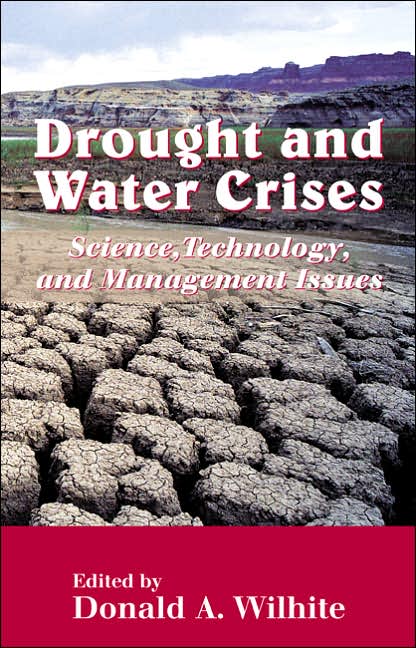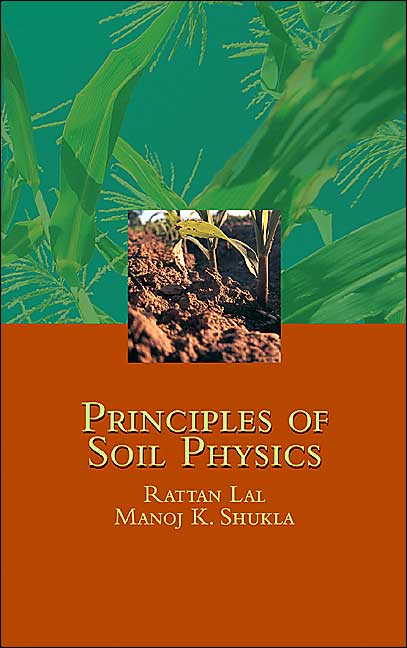You are here
| Size | Seeds | Peers | Completed |
|---|---|---|---|
| 65.76 MiB | 0 | 0 | 0 |
Truth's Book Pack 6
Donald A. Wilhite - Drought and Water Crises: Science, Technology, and Management Issues (2005)

Today the world is facing a greater water crisis than ever. Droughts of lesser magnitude are resulting in greater impact. Even in years with normal precipitation, water shortages have become widespread in both developing and developed nations, in humid as well as arid climates. When faced with severe drought, governments become eager to act. Unfortunately, this eagerness usually wanes when precipitation returns to normal.
Drought and Water Crises: Science, Technology, and Management Issues explains the complexities of drought and the role of science, technology, and management in resolving many of the issues associated with the world's expanding water crises.
Contributors discuss a broad range of topics in attempting to answer these most pressing questions:
How can we can improve planning tools and make mitigation tools more readily available and adaptable?
How can we promote widespread adoption of new water-conserving technologies and encourage their use during non-drought periods?
How can seasonal forecasts and early warning systems be made more reliable and expressed in ways to better meet the needs of end users?
How can the drought-related policy experiences of some countries be systematically utilized to benefit others?
Drought and Water Crises collates considerable information from diverse disciplines with the goal of reducing societal vulnerability to drought. Featuring case studies and stressing new technologies, the book seeks to encourage nations to adopt a more risk-based, proactive policy for water and drought management.
Publisher: Taylor & Francis (2005)
ISBN: 0824727711
F. E. Allison - Soil Organic Matter and Its Role in Crop Production (1973)
Developments in Soil Science Volume 3

Soil organic matter has over the centuries been considered by many as an elixir of life
- in this case of plant life. Ever since the dawn of history, some eight thousand or more
years ago, man has appreciated the fact that dark soils, commonly found chiefly in the
river valleys and broad level plains, are usually (but not always) productive soils. He also
realized at a very early date that color and productivity are commonly associated with
organic matter derived chiefly from decaying plant materials.
Publisher: Elsevier Scientific Pub. Co. (1973)
ISBN: 0444410171
Francis J. Pierce & David Clay - GIS Applications in Agriculture (2007)

The increased efficiency and profitability that the proper application of technology can provide has made precision agriculture the hottest developing area within traditional agriculture. The first single-source volume to cover GIS applications in agronomy, GIS Applications in Agriculture examines ways that this powerful technology can help farmers produce a greater abundance of crops with more efficiency and at lower costs.
Each chapter describes the nature of a problem, examines the purpose and scope of a GIS application, presents the methods used to develop the application, and then goes on to provide results and offer a conclusion as well as supporting information. When appropriate, the chapters present the underlying statistical approach for the GIS software that is used. The text also includes a CD-ROM featuring data sets and color maps produced by the use of GIS.
Concentrating more on the approach and less on the specific software, the authors describe the methods used to develop an application and discuss limitations to the algorithms and the programming code used. They then summarize the application in terms of what it does, how it works, its limitations, and its potential uses. The book provides a toolkit for the acquisition, management, and analysis of spatial data throughout the agriculture value chain.
Publisher: CRC Press (2007)
ISBN: 0849375266
Henry D. Foth - Fundamentals of Soil Science (1990)

This major revision of a bestselling text shows that soil is three-dimensional and dynamic. This concept is developed in the first two chapters and is built on throughout the book. Chapters 3 through 7 explore soil physical properties and water, with expanded coverage of tillage and traffic and an increased emphasis on water and wind erosion processes. Chapters 8 through 11 discuss the biological aspects of soils as well as their mineralogical and chemical properties. In Chapters 12 through 15, the general area of soil fertility and fertilizer use is covered. Other chapters examine soil genesis, taxonomy, geography, land use and soil survey, and land use interpretations. Finally in chapter 20, the importance of nonagronomic factors in the food population problem are discussed. Both English and metric units are used for crop yields, new figures and tables are included, summary statements are given at the end of the more difficult sections and at the end of each chapter, and non-agricultural examples and several computer applications are provided for reference.
Publisher: Wiley (1990)
ISBN: 0471522791
Humberto Blanco-Canqui & Rattan Lal - Principles of Soil Conservation and Management (2008)

“Principles of Soil Management and Conservation” comprehensively reviews the state-of-knowledge on soil erosion and management. It discusses in detail soil conservation topics in relation to soil productivity, environment quality, and agronomic production. It addresses the implications of soil erosion with emphasis on global hotspots and synthesizes available from developed and developing countries. It also critically reviews information on no-till management, organic farming, crop residue management for industrial uses, conservation buffers (e.g., grass buffers, agroforestry systems), and the problem of hypoxia in the Gulf of Mexico and in other regions.
This book uniquely addresses the global issues including carbon sequestration, net emissions of CO2, and erosion as a sink or source of C under different scenarios of soil management. It also deliberates the implications of the projected global warming on soil erosion and vice versa. The concern about global food security in relation to soil erosion and strategies for confronting the remaining problems in soil management and conservation are specifically addressed. This volume is suitable for both undergraduate and graduate students interested in understanding the principles of soil conservation and management. The book is also useful for practitioners, extension agents, soil conservationists, and policymakers as an important reference material.
Publisher: Springer (2008)
ISBN: 140208708X
Murray Hollis - Practical Straw Bale Building (2005)

Building with straw bales is being embraced by amateurs and professionals for its versatility, comfort, environmental friendliness and high insulation. New methods should expand its growing worldwide popularity.
Practical Straw Bale Building describes the best of current practices and introduces new ideas in a practical step-by-step approach, supported by technical data and analysis. Starting from how straw bales are made, it describes the building of both in-fill and load-bearing walls, discusses the properties of materials used to plaster the walls, and details how particular features are incorporated, such as windows, doors, arches, plumbing and electrical. It especially describes new methods that enable the construction of straighter, thinner and easier-to-plaster walls. The book provides a wealth of information and ideas for immediate practical application and as a basis for further development of straw bale building methods.
Publisher: CSIRO Publishing (2005)
ISBN: 0643069771
Rattan Lal & Manoj K. Shukla - Principles of Soil Physics (2004)

Principles of Soil Physics examines the impact of the physical, mechanical, and hydrological properties and processes of soil on agricultural production, the environment, and sustainable use of natural resources. The text incorporates valuable assessment methods, graphs, problem sets, and tables from recent studies performed around the globe and offers an abundance of tables, photographs, and easy-to-follow equations in every chapter.
The book discusses the consequences of soil degradation, such as erosion, inhibited root development, and poor aeration. It begins by defining soil physics, soil mechanics, textural properties, and packing arrangements . The text continues to discuss the theoretical and practical aspects of soil structure and explain the significance and measurement of bulk density, porosity, and compaction.
The authors proceed to clarify soil hydrology topics including hydrologic cycle, water movement, infiltration, modeling, soil evaporation, and solute transport processes. They address the impact of soil temperature on crop growth, soil aeration, and the processes that lead to the emission of greenhouse gases. The final chapters examine the physical properties of gravelly soils and water movement in frozen, saline, and water-repellant soils.
Reader-friendly and up-to-date, Principles of Soil Physics provides unparalleled coverage of issues related to soil physics, structure, hydrology, aeration, temperature, and analysis and presents practical techniques for maintaining soil quality to ultimately preserve its sustainability.
Publisher: Marcel Dekker (2004)
ISBN: 0824753240
Truth's Book Pack 1 - http://tracker.concen.org/torrents-details.php?id=15594
Truth's Book Pack 2 - http://tracker.concen.org/torrents-details.php?id=16013
Truth's Book Pack 3 - http://tracker.concen.org/torrents-details.php?id=16882
Truth's Book Pack 4 - http://tracker.concen.org/torrents-details.php?id=16973
Truth's Book Pack 5 - http://tracker.concen.org/torrents-details.php?id=17443


- Log in to post comments
